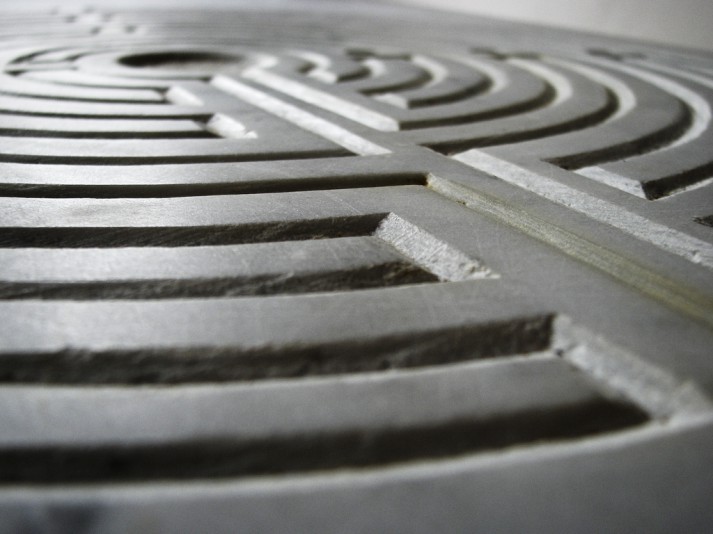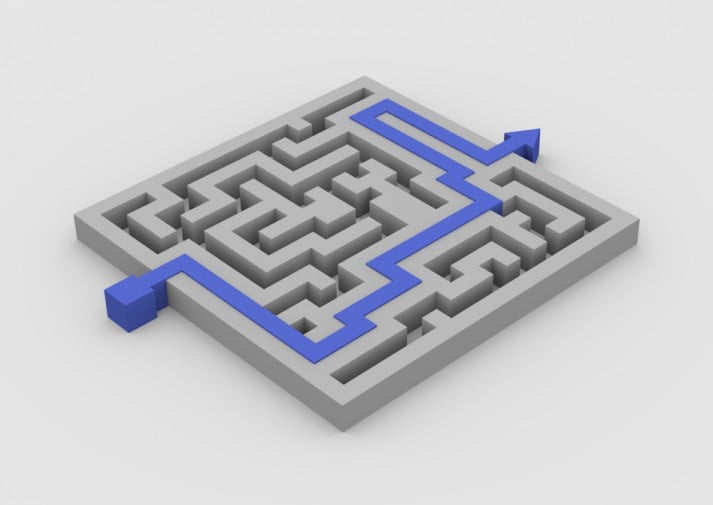1. Merayo-Alonso LA, Cano-García FJ, Rodríguez-Franco L, Ariza-Ariza R, Navarro-Sarabia F. Un acercamiento bibliométrico a la investigación en fibromialgia [A bibliometric approach to research into fibromyalgia]
Reumatologia Clinica. 2007;3(2):55–62. [
PubMed]
2. Tan S, Tillisch K, Mayer E. Functional somatic syndromes: emerging biomedical models and traditional Chinese medicine.
Evidence-Based Complementary and Alternative Medicine.2004;1:35–40. [
PMC free article] [
PubMed]
3. Suhr JA. Neuropsychological impairment in fibromyalgia: relation to depression, fatigue, and pain.
Journal of Psychosomatic Research. 2003;55(4):321–329. [
PubMed]
4. Macintyre A, Hume MC. The chronic fatigue syndrome.
Postgraduate Medical Journal.1993;69(808):p. 164. [
PMC free article] [
PubMed]
5. Hudson JI, Arnold LM, Keck PE, Jr., Auchenbach MB, Pope HG., Jr. Family study of fibromyalgia and affective spectrum disorder.
Biological Psychiatry. 2004;56(11):884–891.[
PubMed]
6. Gruber AJ, Hudson JI, Pope HG., Jr. The management of treatment-resistant depression in disorders on the interface of psychiatry and medicine: fibromyalgia, chronic fatigue syndrome, migraine, irritable bowel syndrome, atypical facial pain, and premenstrual dysphoric disorder.
Psychiatric Clinics of North America. 1996;19(2):351–369. [
PubMed]
7. Chaitow L. Fibromyalgia Syndrome. A Practitioner’s Guide to Treatment. London, UK: Churchill Livingstone; 2003.
8. Sletvold H, Stiles TC, Landro NI. Information processing in primary fibromyalgia, major depression and healthy controls.
Journal of Rheumatology. 1995;22(1):137–142. [
PubMed]
9. Kaplan RF, Meadows M-E, Vincent LC, Logigian EL, Steere AC. Memory impairment and depression in patients with Lyme encephalopathy: comparison with fibromyalgia and nonpsychotically depressed patients.
Neurology. 1992;42(7):1263–1267. [
PubMed]
10. Grace GM, Nielson WR, Hopkins M, Berg MA. Concentration and memory deficits in patients with fibromyalgia syndrome.
Journal of Clinical and Experimental Neuropsychology. 1999;21(4):477–487. [
PubMed]
11. Dalgleish T, Watts FN. Biases of attention and memory in disorders of anxiety and depresion. Clinical Psychology Review. 1990;10(5):589–604.
12. Christensen H, Griffiths K, Mackinnon A, Jacomb P. A quantitative review of cognitive deficits in depression and Alzheimer-type dementia.
Journal of the International Neuropsychological Society. 1997;3(6):631–651. [
PubMed]
13. Yardley L, Redfern MS. Psychological factors influencing recovery from balance disorders.
Journal of Anxiety Disorders. 2001;15(1-2):107–119. [
PubMed]
14. Peter D, Chaitow L, Harris G, Morrison S. Integrating Complementary Therapies in Primary Care. Edinburgh, UK: Churchill Livingstone; 2001.
15. Martínez-Lavín M, Hermosillo AG. Autonomic nervous system dysfunction may explain the multisystem features of fibromyalgia.
Seminars in Arthritis and Rheumatism.2000;29(4):197–199. [
PubMed]
16. Martínez-Lavín M. Is fibromyalgia a generalized reflex sympathetic dystrophy?
Clinical and Experimental Rheumatology. 2001;19(1):1–3. [
PubMed]
17. Katz RS, Heard AR, Mills M, Leavitt F. The prevalence and clinical impact of reported cognitive difficulties (Fibrofog) in patients with rheumatic disease with and without fibromyalgia.
Journal of Clinical Rheumatology. 2004;10(2):53–58. [
PubMed]
18. Sephton SE, Studts JL, Hoover K, et al. Biological and psychological factors associated with memory function in fibromyalgia syndrome.
Health Psychology. 2003;22(6):592–597.[
PubMed]
19. Dick BD, Verrier MJ, Harker KT, Rashiq S. Disruption of cognitive function in fibromyalgia syndrome.
Pain. 2008;139(3):610–616. [
PubMed]
20. Wolfe F, Smythe HA, Yunus MB, et al. The American College of Rheumatology 1990. Criteria for the classification of fibromyalgia. Report of the Multicenter Criteria Committee.
Arthritis and Rheumatism. 1990;33(2):160–172. [
PubMed]
21. Yunus MB, Masi AT, Aldag JC. A controlled study of primary fibromyalgia syndrome: clinical features and association with other functional syndromes.
Journal of Rheumatology.1989;16(19):62–71. [
PubMed]
22. Shaver JLF, Lentz M, Landis CA, Heitkemper MM, Buchwald DS, Woods NF. Sleep, psychological distress, and stress arousal in women with fibromyalgia.
Research in Nursing and Health. 1997;20(3):247–257. [
PubMed]
23. Bigatti SM, Hernandez AM, Cronan TA, Rand KL. Sleep disturbances in fibromyalgia syndrome: relationship to pain and depression.
Arthritis Care and Research. 2008;59(7):961–967. [
PMC free article] [
PubMed]
24. Leza JC. Fibromyalgia: a challenge for neuroscience.
Revista de Neurologia.2003;36(12):1165–1175. [
PubMed]
25. Backman CL. Arthritis and pain. Psychosocial aspects in the management of arthritis pain.
Arthritis Research and Therapy. 2006;8, article 221 [
PMC free article] [
PubMed]
26. Deluze C, Bosia L, Zirbs A, Chantraine A, Vischer TL. Electroacupuncture in fibromyalgia: results of a controlled trial.
British Medical Journal. 1992;305(6864):1249–1252.[
PMC free article] [
PubMed]
27. Ferraccioli G, Ghirelli L, Scita F, Noili M, Mozzam M, Fontana S, et al. EMG-biofeedback training in fibromyalgia syndrome.
The Journal of Rheumatology. 1987;14:820–825.[
PubMed]
28. Buckelew SP, Conway R, Parker J, et al. Biofeedback/relaxation training and exercise interventions for fibromyalgia: a prospective trial.
Arthritis Care and Research.1998;11(3):196–209. [
PubMed]
29. Huskisson EC, Sturrock RD, Tugwell P. Measurement of patient outcome.
British Journal of Rheumatology. 1983;22(3):86–89. [
PubMed]
30. González S, Rodríguez M. El dolor I: Fisiopatología. Tipos. Clínica. Sistemas de Medición. In: González M, editor. Tratado de Medicina Paliativa y Tratamiento de Soporte en el enfermo con cáncer. Madrid, Spain: Panamerica; 1996.
31. Badia X, Salmerón M, Alonso J. Measuring Health. Barcelona, Spain: Edimac; 2005. La Medida de la Salud.
32. Buysse DJ, Reynolds CF, III, Monk TH, Berman SR, Kupfer DJ. The Pittsburgh Sleep Quality Index: a new instrument for psychiatric practice and research.
Psychiatry Research.1989;28(2):193–213. [
PubMed]
33. Schotte CKW, Maes M, Cluydts R, De Doncker D, Cosyns P. Construct validity of the Beck Depression Inventory in a depressive population.
Journal of Affective Disorders.1997;46(2):115–125. [
PubMed]
34. Lasa L, Ayuso-Mateos JL, Vázquez-Barquero JL, Díez-Manrique FJ, Dowrick CF. The use of the Beck Depression Inventory to screen for depression in the general population: a preliminary analysis.
Journal of Affective Disorders. 2000;57(1–3):261–265. [
PubMed]
35. Spielberger CD. Questionnaire for State–Trait Anxiety. Madrid, Spain: TEA; 2007. STAI. Cuestionario de Ansiedad Estado-Rasgo.
36. Kohn PM, Macdonald JE. The survey of recent life experiences: a decontaminated hassles scale for adults.
Journal of Behavioral Medicine. 1992;15(2):221–236. [
PubMed]
37. Upledger J. Your Inner Physician and You & CranioSacral Therapy. Seattle, DC, USA: Publishers Group West; 1997.
38. Upledger J, Vredevoogd J. Craniosacral Therapy. Seattle, DC, USA: Esatland Press; 1995.
39. Upledger J. Somato Emotional Release. Berkeley, UK: North Atlantic Books; 2002.
40. Upledger J. Release and Beyond. Palm Beach Gardens, Fla, USA: UI Publishing; 1999. Somato Emotional.
41. Bennet R. Rheumatic Disease Clinics of North America. Philadelphia, DC, USA: Saunders; 2002.
42. Strobel E-S, Wild J, Müller W. Interdisciplinary group treatment for fibromyalgia.
Zeitschrift für Rheumatologie. 1998;57(2):89–94. [
PubMed]
43. Astin JA, Berman BM, Bausell B, Lee W-L, Hochberg M, Forys KL. The efficacy of mindfulness meditation plus Qigong movement therapy in the treatment of fibromyalgia: a randomized controlled trial.
Journal of Rheumatology. 2003;30(10):2257–2262. [
PubMed]
44. Kissel W, Mahnig P. Fibromyalgia (generalizad tendomyopathy) in expert assesment. Analysis of 158 cases.
Praxis. 1998;87:538–545. [
PubMed]
45. Epstein SA, Kay G, Clauw D, et al. Psychiatric disorders in patients with fibromyalgia: a multicenter investigation.
Psychosomatics. 1999;40(1):57–63. [
PubMed]
46. Aaron LA, Bradley LA, Alarcón GS, et al. Psychiatric diagnoses in patients with fibromyalgia are related to health care-seeking behavior rather than to illness.
Arthritis and Rheumatism. 1996;39(3):436–445. [
PubMed]
47. Okifuji A, Turk DC, Sherman JJ. Evaluation of the relationship between depression and fibromyalgia syndrome: why aren’t all patients depressed?
Journal of Rheumatology.2000;27(1):212–219. [
PubMed]
48. Olivera FJ, Maza C. Culpabilidad y fibromialgia (Guilt and fibromyalgia)
Aten Primaria.2002;30:p. 534. [
PubMed]
49. Angst F, Brioschi R, Main CJ, Lehmann S, Aeschlimann A. Interdisciplinary rehabilitation in fibromyalgia and chronic back pain: a prospective outcome study.
Journal of Pain.2006;7(11):807–815. [
PubMed]
50. Gustafsson M, Ekholm J, Broman L. Effects of a multiprofessional rehabilitation programme for patients with fibromyalgia syndrome.
Journal of Rehabilitation Medicine.2002;34(3):119–127. [
PubMed]
51. Hooten WM, Townsend CO, Sletten CD, Bruce BK, Rome JD. Treatment outcomes after multidisciplinary pain rehabilitation with analgesic medication withdrawal for patients with fibromyalgia.
Pain Medicine. 2007;8(1):8–16. [
PubMed]
52. Gard G. Body awareness therapy for patients with fibromyalgia and chronic pain.
Disability and Rehabilitation. 2005;27(12):725–728. [
PubMed]
53. Nicassio PM, Radojevic V, Weisman MH, et al. A comparison of behavioral and educational interventions for fibromyalgia.
Journal of Rheumatology. 1997;24(10):2000–2007. [
PubMed]
54. Ramsay C, Moreland J, Ho M, Joyce S, Walker S, Pullar T. An observer-blinded comparison of supervised and unsupervised aerobic exercise regimens in fibromyalgia.
Rheumatology. 2000;39(5):501–505. [
PubMed]
55. Mannerkorpi K, Nyberg B, Ahlmen M, Ekdahl C. Pool exercise combined with an education program for patients with fibromyalgia syndrome. A prospective, randomized study.
Journal of Rheumatology. 2000;27(10):2473–2481. [
PubMed]
56. Rivera Redondo J, Moratalla Justo C, Valdepeñas Moraleda F, et al. Long-term efficacy of therapy in patients with fibromyalgia: a physical exercise-based program and a cognitive-behavioral approach.
Arthritis Care and Research. 2004;51(2):184–192. [
PubMed]
57. Hains G, Hains F. Combined ischemic compression and spinal manipulation in the treatment of fibromyalgia: a preliminary estimate of dose and efficacy.
Journal of Manipulative and Physiological Therapeutics. 2000;23(4):225–230. [
PubMed]
58. Çitak-Karakaya I, Akbayrak T, Demirtürk F, Ekici G, Bakar Y. Short and long-term results a connective tissue manipulation and combined ultrasound therapy in patients with fibromyalgia.
Journal of Manipulative and Physiological Therapeutics. 2006;29(7):524–528.[
PubMed]
59. Raj K, Chandra TS, Stanley MA. The enteric nervous system. The New England Journal of Medicine. 1996;43:1106–1115.
60. McCain GA, Bell DA, Mai FM, Halliday PD. A controlled study of the effects of a supervised cardiovascular fitness training program on the manifestations of primary fibromyalgia.
Arthritis and Rheumatism. 1988;31(9):1135–1141. [
PubMed]
61. Martin L, Nutting A, MacIntosh BR, Edworthy SM, Butterwick D, Cook J. An exercise program in the treatment of fibromyalgia.
Journal of Rheumatology. 1996;23(6):1050–1053.[
PubMed]
62. Nørregaard J, Bülow PM, Lykkegaard JJ, Mehlsen J, Danneskiold-Samsøe B. Muscle strength, working capacity and effort in patients with fibromyalgia.
Scandinavian Journal of Rehabilitation Medicine. 1997;29(2):97–102. [
PubMed]
Article taken from: http://www.ncbi.nlm.nih.gov

























 h for 25 weeks. The treatment was carried out by an expert craniosacral therapist with the patient in prone position. This therapy consists of applying very mild manual traction on cranial bones in flexion or extension stages of the craniosacral cycle. The aims were to contribute to re-establishing the normal movement of cranial bones and to intervene in the autonomic nervous system by releasing bone and membranous restrictions [
h for 25 weeks. The treatment was carried out by an expert craniosacral therapist with the patient in prone position. This therapy consists of applying very mild manual traction on cranial bones in flexion or extension stages of the craniosacral cycle. The aims were to contribute to re-establishing the normal movement of cranial bones and to intervene in the autonomic nervous system by releasing bone and membranous restrictions [
